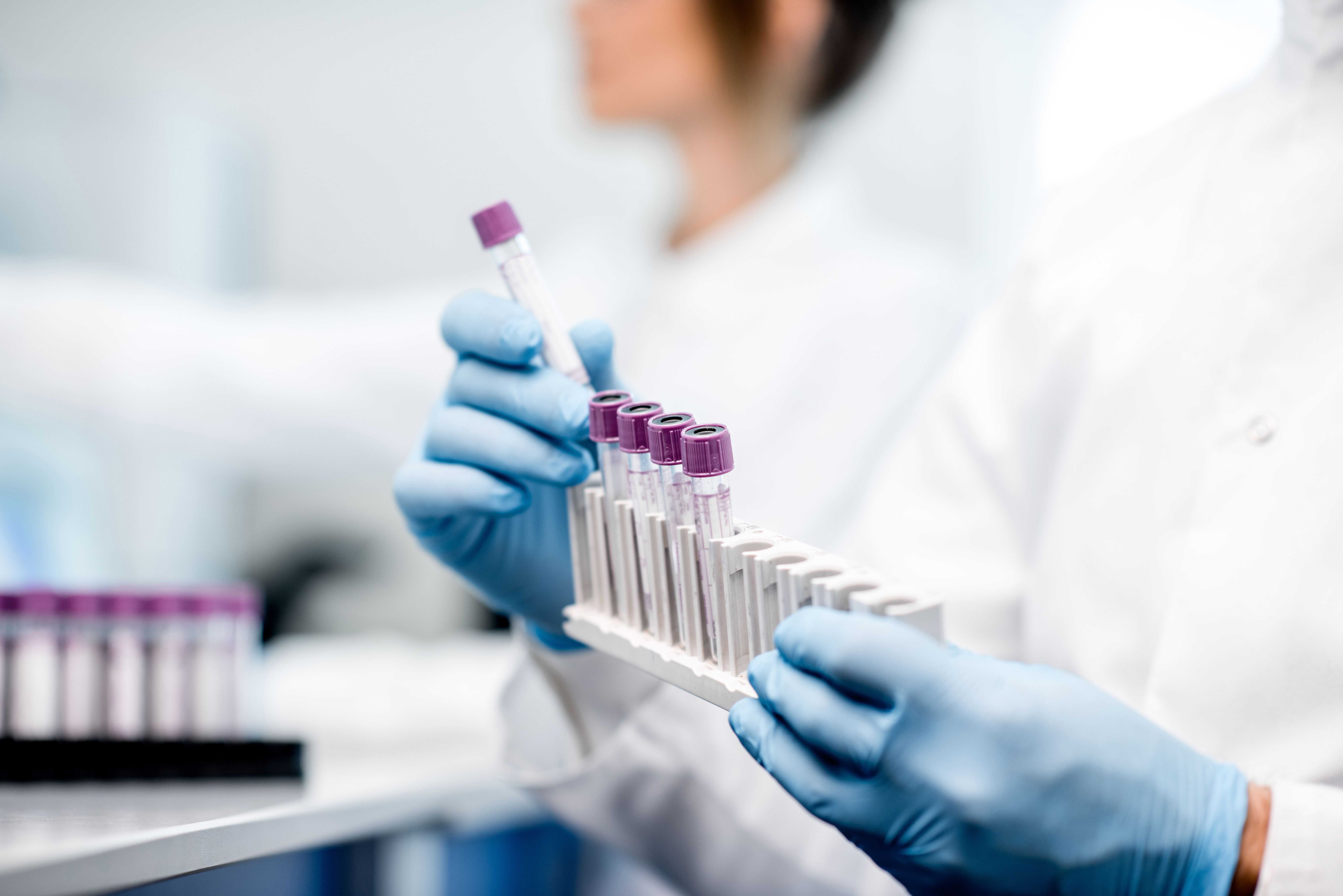Specimen Collection
The National Patient Safety Regulations require at least two (2) patient identifiers on specimens submitted for testing.
Before collection verify patient identification by having patient, parent or guardian state full name. Photo identification is mandatory for chain of custody drug screening.
The phlebotomist may collect blood samples by venipuncture or capillary draw. The doctor, a physician office employee, the patient or the patient’s guardian is responsible for collecting other specimen types.
Label each specimen with the following:
- Patient’s name or other unique identifier
- Date and time of collection
- Tests ordered
- Sample source if indicated
- Phlebotomist’s initials
Submit sample preserved by method listed in the test directory. Frozen samples must have sample type listed on container.
Submit a test request form complete with the patient’s test and billing information and any other pertinent information. It is very important that each request include the following:
- Patient’s first and last name
- Date of birth
- Date and time of collection
- Physician’s name
- Test(s) requested
- Pertinent clinical history (Example: for Pap smears, the patient’s last menstrual period and last Pap result)
- Signed Advanced Beneficiary Notice (ABN), if applicable
- ICD-10 Code if applicable
- Complete billing information
Specimen Types
Draw blood in the designated color-coded tube. Immediately mix the blood by inverting gently 10-12 times. Within 30 minutes, separate the plasma by centrifugation for 10 minutes. Transfer to a properly labeled, plastic vial. The vial must have sample type written on the container.
Draw blood in a serum separator tube or plain red top containing no additives. To obtain 4 mL serum, draw at least a full 10mL tube. If a serum separator tube is drawn, invert tube 5 times. Allow blood to clot for 30 minutes. Centrifuge for 10 minutes. If the blood was drawn in a plain red tube, transfer serum to a plastic vial. The vial must have the sample type written on the container.
If random urine is required, collect a clean-catch urine in a clean container with leak-proof lid.
Timed urine collection is required for quantitative tests. Accurate test results depend on proper collection and preservative of timed urine specimens. On the day of collection, discard the first voided urine and begin timing the collection. Refrigerate urine during collection. Collect all urine for the time span designated. Include the sample collected at the end of the time span. Record collection duration.
Draw blood in the designated anti-coagulant color-coded tube. Immediately mix blood by inverting the tube gently 10 to 12 times. Unless otherwise specified, submit tube unopened.
Place tissue sample in vial with 10% formalin. Label the samples collected by the physician with patient’s name, source of the specimen, and date of collection.
Fluids: Mix fluid with equal amount of 50% alcohol fixative. Label container with patient’s name.
Smears: Spray fix smears within 3 seconds of preparation. Label slide with patient’s name.
SurePath: Detach endocervical/cervical sample obtained with cervical brush into BD SurePath collection vial. Label vial with patient’s name. Seal and properly label the collection vial.
ThinPrep: Swirl the spatula or endocervical brush device vigorously 10 times in the Thin Prep vial. Seal and properly label the collection vial.
Conventional: Smear endocervical brushings and scrapings on one glass slide. Spray fix within 3 seconds of preparation. Label the glass slide and the transport pack with patient name and date. Seal and properly label the collection vial.
Tissue Biopsy: Place tissue sample in vial with 10% formalin. Label the samples collected by the physician with patient’s name, source of the specimen, and date of collection.
Acid Fast Culture:
Collect specimen in container and hold at room temperature until courier pickup. No preservative is necessary.
Acid Fast Smear:
- Sputum : 5 to 10 mL of early morning expectorant from a deep cough.
- Blood : 10 mL for adults or 1.5 mL for children collected aseptically and placed in SPS (yellow) tubes.
Aerobic (routine, wound) Culture:
Swab: Submit a culture swab in transport media.
Anaerobic Culture:
Be sure specimen is from suitable anaerobic sterile body site or deep body cavity. Send a culture swab immersed in appropriate transport media. Submit promptly for optimal recovery of pathogens.
Blood Cultures:
Ideally, 20 mL of blood is drawn and split between an aerobic bottle and an anaerobic bottle. For pediatric draws, 1 to 2 mL blood may be submitted in an aerobic bottle. Use the following aseptic technique:
- Clean the blood collection site with alcohol.
- Disinfect the site with iodine and allow to dry 1 to 2 minutes.
- Clean the diaphragm of the bottles with alcohol.
- Do not touch the phlebotomy site after disinfection.
- Draw blood with a sterile syringe and needle.
- Immediately transfer 20 mL of blood to each bottle.
- Mix the bottles by inversion to prevent blood from clotting.
- Remove iodine from the patient's arm with alcohol.
Sputum Culture:
Submit sputum expectorated by deep cough into a sterile container.
Stool Culture:
Submit fresh stool specimen uncontaminated by urine in a vial containing Cary Blair transport media.
Urine Culture :
Urine placed in gray-top transport tube is preferred. Urine collected in sterile container is also acceptable. Directions for proper collection:
- Females should clean the periurethral area with water.
- Males should clean the glans penis area with water.
- Allow the initial flow of urine to commence and then collect a midstream portion into a sterile container.
- Submit sealed container refrigerated or transfer urine to gray-top preservative tube at room temperature. Note: If urinalysis is also ordered, an unpreserved sample should be submitted for that test. Susceptibility testing is not routinely performed on voided specimens with mixed urogenital flora or on colony counts below 10,000 CFU/mL.
Vaginal Culture:
Specimens should be submitted on a culture swab immersed in transport media.
Viral Culture:
Body fluid in a sterile container or sterile swab immersed in viral transport media is required. Refrigerate.

